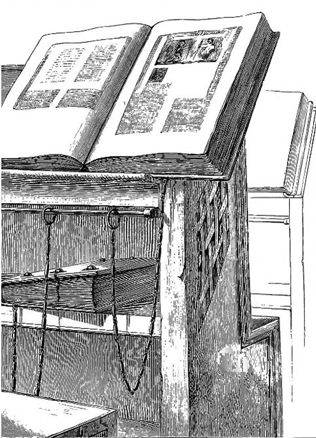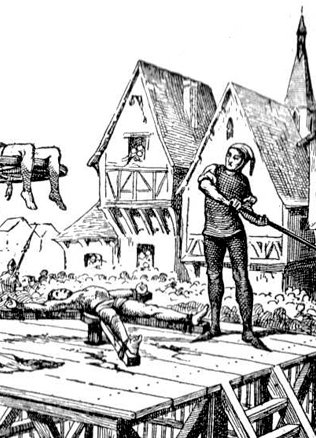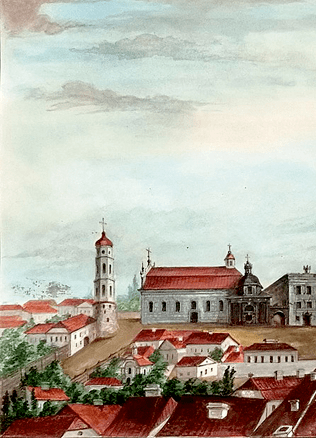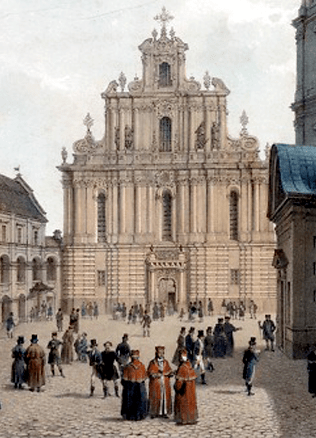Radziwiłł Mausoleums: Catholic in Nyasvizh and Protestant in Dubingiai
In the 15th-16th centuries, the Lithuania magnates, having broken away from the nobility, sought to strengthen in their own and public consciousness the dominating situation in the state via the construction of exclusive residences and installation of them of family gravesites. In the 16th century, the leaders initiating such processes of aristocratic strategy were the Radziwiłł, Chodkiewicz and Sapieha families. Mausoleums of nobility families and their funeral ceremonies – pompa funebris – the last theatrical spectacle related to the deceased, usually combining many forms of art, used to become the peak communication event, highlighting the importance and fame of the family in question.
A Symbol of the family piety and prestige
The choice of a family burial site was made on the grounds of a person’s social standing and confessional adherence. In the 14th-15th centuries, after Lithuania adopted Christianity, in the absence of a sufficient number of churches, for a certain period of time the deceased were burnt or buried in inhumation graves, located in the cemeteries in which pagans used to be buried. The first Christian cemeteries are associated with the development of towns and particularly with the activities of the Franciscan Order. The number of parish-based Catholic or Orthodox houses of worship was increasing, and cemeteries were established in their proximity. Nobility usually chose exceptional places for the last resting place such as the church founded or supported by them, Orthodox churches and monasteries. Due to a developed cult of martyrs and a prevalent belief that martyrs protected the living and guarded the dead, nobility preferred to choose as their eternal resting place the locality closest to the revered martyrs’ burial site, that is, the church. This was also an expression of social prestige.
Up until the mid 16th century, the nobility of GDL used to choose the following sites as their burial place: the main Cathedral houses of worship (Vilnius Cathedral or the Kiev Pechersk Lavra), the main houses of worship located in the capital, e.g., Vilnius Franciscan and Bernardine churches or the churches founded by the nobility in their main residences.
In the late 16th–the first half of the 17th century, the tradition to establish multigenerational family mausoleums as a family burial site emerged in GDL.
Among the surviving burial sites of such type, the following Catholic mausoleums are best known: those of the Radziwiłł in Nyasvizh, the Sapieha in Vilnius, the Chodkiewicz in Kretinga, and the Protestant Radziwiłł branch in Dubingiai.
Modest funeral of the family burial-site founder
One of the earliest, largest and oldest mausoleums of the noble families in the Grand Duchy of Lithuania is that of the Catholic Olyka and Nyasvizh line of the Radziwiłł family in Nyasvizh. Its founder was the convert (from Protestantism to Catholicism) Duke of Nyasvizh and Olyka, the voivod of Vilnius Mikołaj Krzysztof Radziwiłł the Orphan (1549–1616). The mausoleum, installed in the catacombs of the Nyasvizh Body of Christ church during the priod from 1587 to 1603, turned into the last resting place for more than 70 family representatives of this Radziwiłł branch. The earliest burials were held in the late 16th century, the last in the late 20th century. Among the earliest burials are the remains of the firstborn baby son of the nobleman and his wife Elizabeth Euphemia Wyszniewiecka Radziwiłł († 1597), Mikołaj († 1588), who survived for merely 18 months; the remains of the twins Krystyna (1593–1599) and Katarzyna (1593–1600), both of whom died at a young age as well as the remains of a sixteen-year old son Krzysztof (1590–1607), known for his extraordinary talents. Ornate tombstones were erected for all of them by the grieving parents. Following the testators’ will, both spouses were buried in Nyasvizh as well. Their burial was held without any pompous ceremony.
Mikołaj Krzysztof Radziwiłł the Orphan instructed in his will to have his body carried to the church by two uncovered horses, with no accompanying certificates or coat of arms.
The body of the deceased was to be clad merely in his pilgrimage cloak, and a copper cross brought from Jerusalem was to be put round his neck. Three poor persons were requested to carry the body into the church, and only family members and close persons were to be invited to attend the funeral. The burial was to be held shortly after the death, without keeping the body unburied. The nobleman’s body must have been embalmed. This fact was disclosed by the Commission investigating the methods of embalming procedure in 1953, when perfectly preserved remains of Mikołaj Krzysztof Radziwiłł the Orphan were found.
The last Radziwiłł was buried in Nyasvizh in the late 20th century
In the early 17th century, the remains of three more sons of the nobleman and their family members were buried in the Nyasvizh mausoleum. Only two children by Mikołaj Krzysztof Radziwiłł the Orphan were buried elsewhere. One of them was the Knight of Malta, a celibate Zygmunt Karol Radziwiłł (1591–1642), who died in Italy and was buried there. The other was his daughter Elżbieta Radziwiłł Kiszkowa (1585–1618). As befits a married noble woman, she was buried in her husband’s residence. As an exceptional case, a place in the mausoleum was also reserved for a close friend of Mikołaj Krzysztof Radziwiłł the Orphan, a courtier and the marshal of Kaunas Andrzej Skorulski (†1637), who accompanied Radziwiłł to the Holy Land.
There is mention in the documents dated as early as the first half of the 20th century that the number of burials in Nyasvizh must have been 102. In the course of time, part of the old coffins and more ornate sarcophagi were destroyed or damaged during renovation of the burial site or acts of vandalism. Fortunately, more significant losses were avoided. Unlike the case of the Protestant Radziwiłł, Catholics did not need to move their mausoleum elsewhere. Even today, this burial site is chosen as the last resting place by the Radziwiłł family descendants. In 2000, the remains of the Nyasvizh ordinate Nicholas Anthony Radziwiłł, who died in London in 1999, were buried here.
What does the Dubingiai mausoleum remind us of?
The Protestant nobility of GDL started establishing separate burial-sites of their families in the last quarter of the 16th century. The first among them were the Calvinist Biržai and Dubingiai branch of the Radziwiłł family. About 1564–1565, the decision was made by then voivod of Trakai, Mikołaj Radziwiłł the Red 1515–1584) to change the confession of the Dubingiai church, after which it was decided to install a family resting-site in its basement. In the first half of the 17th century, about 10 representatives of the Radziwiłł family and probably their close customers were buried here.
Do You Know?
One of the earliest, largest and oldest mausoleums is that of the Catholic Olyka and Nyasvizh line of the Radziwiłł family in Nyasvizh. Its founder was the convert (from Protestantism to Catholicism) Duke of Nyasvizh and Olyka, the Voivode of Vilnius Mikołaj Krzysztof Radziwiłł the Orphan (1549–1616). Even today, this burial site is chosen as the last resting place by Radziwiłł family descendants. In 2000, the remains of the Nyasvizh ordinate Nicholas Anthony Radziwiłł, who died in London in 1999, were buried here.
The first to be buried in Dubingiai Reformed church in the spring of 1577 was a two-year old grandson of Mikołaj Radziwiłł the Red, Mikołaj Radziwiłł (1575–1577). Just half a year later the remains of the boy’s mother Duchess Anna Radziwiłł (†1578) and her daughter Barbara, who died early (1573–1578), were laid to rest here. Other funerals might have been held in Dubingiai as well, e.g., the funeral of the second wife to the voivod of Nowogrodziec, Mikołaj Radziwiłł, Helena Hlebovicz Radziwiłł and their daughter (1580–1583) in 1583, even though there is no mention of that in the wills of Mikołaj Radziwiłł. The peak moment in the history of the Radziwiłł mausoleum in Dubingiai was the funeral of the burial-site founder Mikołaj Radziwiłł the Red in July of 1584. There is mention in the 17th-century historic sources of a marble tomb installed in the Dubingiai church, which was dedicated to the deceased nobleman. Yet another significant event was the funeral of Mikołaj Radziwiłł, the decease nobleman’s oldest son in 1589. According to the correspondence, regardless of the confessional differences, the funeral was attended by the most influential politicians in GDL, among them the Catholic Chancellor of Poland Jan Zamoiski and the catholic Marshall of GDL, Mikołaj Krzysztof Radziwiłł the Orphan. The Radziwiłł mausoleum in Dubingiai was given a second life by the funeral of LDK cupbearer, Vilnius castellan Janusz Radziwiłł, grandson of Mikołaj Radziwiłł the Red. It was thanks to his care and funding that the construction of a one tower brick church was stated, to be completed in 1620. The new church replaced a previously wooden Evangelical Reformed church. In 1621 he was buried in the basement of a newly built church with all pompous ceremony, side by side with his ancestors, accompanied by a funeral entourage of at least a thousand participants, were carrying black flags adorned with Radziwiłł coats of arms.
The resting place of the most powerful in the Grand Duchy of Lithuania
After the aforementioned funeral, the late noble’s brother, the Voivode of Vilnius Krzysztof II Radziwiłł rearranged the burial site in Dubingiai once again, renovated the basements, ordered and erected marble sarcophagi, the worth of which was 3000 gold coins. Two of them were white and smaller in size, among the remaining, two black, two red and one was a white sarcophagus. From the thirties of the 17th century, there is mention in the church inventory of 8 coffins with the Radziwiłł remains, held in the church basement. However, in the first known inventory (about 1634 m.), as many as 10 burials in Dubingiai are mentioned. Most likely, apart from the 6 aforementioned burials, the remains of two more nobles were transferred from Vilnius to the Dubingiai church in the early 17th century. These were the remains of the nobles coming from the adjacent branch, those of the Vilnius voivod Olyka and Duke of Nyasvizh Mikołaj Radziwiłł the Black (1515–1565) and his wife Elżbieta Szydłowiecka (1533–1562). The remaining two coffins might have held the remains of customers, close to the nobles. There is no mention of the Radziwiłł family burials in Dubingiai after 1627.
The Dubingiai Radziwiłł mausoleum, which started to function from the 70-ies of the 16th century, served as the main burial-site of the Dukes in 1577–1627. It holds the remains of almost all most prominent representatives of the Radziwiłł family of that time, all of them Evangelical Reformers. This was one of the first Evangelical burial-sites of such scale in GDL. The sarcophagi of the dukes Radziwiłł were held in the Dubingiai church up until the invasion of the Russian army in 1655. After the church was ravaged by Russian soldiers, the tin sarcophagi were ravished, and the “bodies found in the basement scattered all around the church.” Assistant to the elder of the manor “collected the bodies and carried them back to the basement,” where the bodies were laid in simple wooden coffins with the silver plaques attached. During the archaeological research of the Dubingiai Evangelical Church in 2003–2005, the remains of the burial-site were identified. It is presumed that these might have been the burials of the nobles Radziwiłł. In 2009, the remains were transferred to a new sarcophagus and ceremoniously re-buried in Dubingiai.
D. Karvelis, R. Ragauskienė, Iš Radvilų giminės istorijos: Dubingių kunigaikštystė 1547–1808 m., Vilnius, 2009. From the History of the Radziwiłł Family: The Duchy of Dubingiai in 1547–1808, Vilnius, 2009.
Raimonda Ragauskienė



